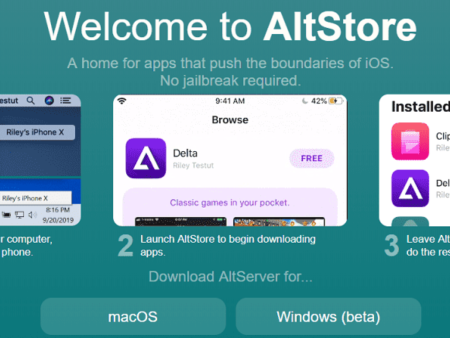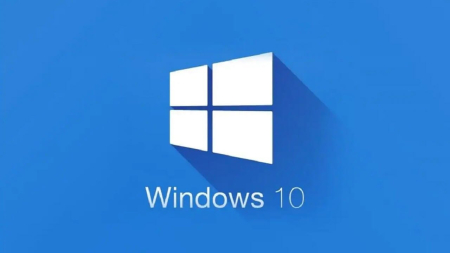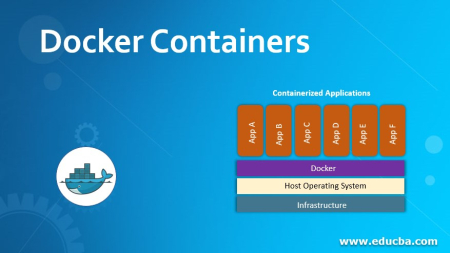How to Develop Mobile Applications A Comprehensive Guide
-
23/07/2023
-
2616
-
0
- 1. Who develops mobile applications?
- 2. What are the different approaches to mobile application development?
- 3. When should you choose native app development?
- 4. How to choose the right development approach for your app?
- 5. Pros and Cons of Working with App Development Companies
- 6. Step-by-Step Guide to Mobile App Development
- 7. Comparing App Development Frameworks
- 8. Tips for Successful Mobile App Development
- 9. The Best Approach to Mobile App Development
- 10. Conclusion
- 11. FAQs
Mobile applications have become an integral part of our daily lives, with the increasing demand for smartphones and tablets. From entertainment to business, mobile apps have transformed the way we interact with technology. In this guide, we will explore the various aspects of mobile application development, including different software tools and programming languages used to create them. We will also look at the pros and cons of each approach, along with its key features and benefits. How to Develop Mobile Applications A Comprehensive Guide
Related posts
Xbox Cloud Gaming A Comprehensive Guide to Stream Your Games 2023
How to download and setup Windows 10 pro iso file latest 2023
1. Who develops mobile applications?
The world of mobile app development is vast and diverse, with a range of professionals working on it. These include app developers, designers, project managers, business analysts, and quality assurance testers. The role of each professional is critical in ensuring the success of the project.
App developers are responsible for creating the code that forms the foundation of the app. They work with different programming languages and software tools to bring the app's functionality to life. Designers, on the other hand, focus on the app's user interface (UI) and user experience (UX). They work closely with developers to ensure that the app's design complements its functionality.
Project managers oversee the entire app development process, ensuring that all stakeholders are informed and involved throughout. Business analysts help identify the target audience and analyze the app's market potential. Finally, quality assurance testers test the app's functionality to ensure that it is bug-free and meets the desired standards.
2. What are the different approaches to mobile application development?
There are several approaches to mobile application development, each with its own advantages and disadvantages. These include:
2.1 Native App Development
Native app development involves writing code specifically for a particular platform, such as Android or iOS. This approach allows developers to take full advantage of the platform's features and provide a seamless user experience.
Pros:
- High performance and fast load times
- Access to native device features like camera, microphone, and GPS
- Better app store visibility
Cons:
- Higher development costs due to platform-specific development
- Longer development time due to the need to build separate apps for each platform
- Maintenance and updates may be complex due to multiple codebases
2.2 Hybrid App Development
Hybrid app development involves creating a single app that can run on multiple platforms, using web technologies like HTML, CSS, and JavaScript. This approach allows developers to create cross-platform applications with minimal effort.
Pros:
- Lower development costs due to a single codebase
- Faster development time due to the reusability of code
- Easier maintenance and updates due to a single codebase
Cons:
- Performance limitations due to the use of web technologies
- Limited access to native device features
- App store visibility may be lower than native apps
2.3 Cross-Platform App Development
Cross-platform app development involves writing code that can be compiled for multiple platforms, such as Android and iOS. This approach uses frameworks like Xamarin, Flutter, or NativeScript, which allow developers to write code in a single language, such as C# or Dart, and deploy it on multiple platforms.
Pros:
- Lower development costs due to a single codebase
- Faster development time due to the reusability of code
- Easy access to native device features using plugins
Cons:
- Performance limitations due to cross-platform code execution
- The learning curve for the platform-specific APIs
- App store visibility may be lower than native apps
3. When should you choose native app development?
Native app development is typically chosen when you need to provide the best user experience to your users. If your app relies heavily on native device features such as a camera, microphone, or GPS, then native app development is the way to go. Additionally, if you want to take advantage of the platform's unique features, such as Apple Pay or Android Auto, then native app development is the only option.
4. How to choose the right development approach for your app?
Choosing the right development approach for your app depends on several factors, including project requirements, budget, and timeline. If you are working with a limited budget and timeline, then cross-platform app development may be the best option. However, if your project requires the best performance and access to native device features, then native app development may be the way to go.
When choosing the right development approach, it's important to consider your target audience and their preferred platform. For example, if your target audience is primarily iOS users, then it makes sense to prioritize iOS development over Android or other platforms.
5. Pros and Cons of Working with App Development Companies
 How to Develop Mobile Applications A Comprehensive Guide. Source: Asoservice.com
How to Develop Mobile Applications A Comprehensive Guide. Source: Asoservice.com
Working with an app development company can have its advantages and disadvantages. Here are some of the pros and cons to consider:
5.1 Pros:
- Access to a team of experienced professionals
- Cost-effective due to reduced overhead costs
- A wider range of expertise and skill sets
5.2 Cons:
- Communication and collaboration may be challenging
- Limited control over the development process
- May be less flexible than in-house development teams
Alternatives to App Development Companies
If you are not comfortable working with an app development company, there are other alternatives available. These include:
5.3 In-House App Development
In-house app development involves hiring a team of developers and designers to work on your project from within the organization. This approach provides complete control over the development process and allows for greater flexibility.
Pros:
- Complete control over the development process
- High level of customization
- Improved communication and collaboration
Cons:
- Higher overhead costs due to salaries and benefits
- Limited expertise and skill sets
- Longer development time due to recruitment and training processes
5.4 Freelance Developers
Freelance developers are individual contractors who can work on your project remotely. This approach is cost-effective and provides access to a wider range of expertise and skill sets.
Pros:
- Cost-effective due to reduced overhead costs
- A wider range of expertise and skill sets
- Flexibility in project management
Cons:
- Communication and collaboration may be challenging
- Limited control over the development process
- Availability and reliability may be a concern
6. Step-by-Step Guide to Mobile App Development
Now that we have explored the different approaches to mobile app development, let's take a look at a step-by-step guide to creating a mobile application:
- Identify the problem you want to solve: Before starting any development work, identify the problem you want to solve through your mobile application. Conduct market research and identify the target audience for your app.
- Choose the right approach: Based on your project requirements, budget, and timeline, choose the right approach to development, such as native, hybrid, or cross-platform.
- Define the scope and requirements: Define the app's scope and requirements and create a plan for the development process. Identify the features and functionalities required and create a wireframe or prototype of the app.
- Design the UI/UX: Work with a designer to create the app's user interface and user experience. Ensure that the design is visually appealing, easy to use, and meets the target audience's needs.
- Develop the app: Write the code for your mobile application using the chosen development approach. Test the app for functionality, performance, and usability.
- Launch the app: Prepare the app for launch by submitting it to the app store and ensure that it meets all the guidelines and requirements. Promote the app through various marketing channels.
- Maintain and update the app: Monitor the app's performance after launch and make necessary updates and maintenance to keep it up-to-date and bug-free.
7. Comparing App Development Frameworks
Here are some popular app development frameworks compared based on their key features:
7.1 Appcelerator Titanium
Appcelerator Titanium is an open-source cross-platform app development framework. It uses JavaScript to develop native iOS and Android applications.
Pros:
- Code reusability across multiple platforms
- Access to native device features
- Open-source community support
Cons:
- Limited community support
- Performance limitations due to cross-platform code execution
- The steep learning curve for beginners
7.2 Flutter
Flutter is a Google-developed open-source UI toolkit used for developing multi-platform applications using a single codebase. It uses the Dart programming language and provides hot reload functionality for fast development.
Pros:
- Fast development process due to hot reload functionality
- Native app performance due to compiled code
- Easy access to native device features using plugins
Cons:
- Limited third-party libraries and tools
- Smaller community size compared to other frameworks
- The steep learning curve for beginners
7.3 Xamarin
Xamarin is a Microsoft-owned cross-platform app development framework that uses C# to write code for iOS, Android, and Windows platforms. It provides access to platform-specific APIs and native device features.
Pros:
- Access to platform-specific APIs and native device features
- Code reusability across multiple platforms
- Strong community support
Cons:
- Slower development process due to complex setup requirements
- Higher cost due to licensing fees for enterprise-level development
- Performance limitations due to cross-platform code execution
7.4 NativeScript
NativeScript is an open-source cross-platform app development framework that uses JavaScript or TypeScript to write code for iOS and Android platforms. It provides access to native device features through plugins.
Pros:
- Easy access to native device features using plugins
- Code reusability across multiple platforms
- Open-source community support
Cons:
- Limited third-party libraries and tools
- The steep learning curve for beginners
- Performance limitations due to cross-platform code execution
8. Tips for Successful Mobile App Development
Here are some tips for successful mobile app development:
- Conduct market research and identify the target audience before beginning development.
- Choose the right development approach based on project requirements, budget, and timeline.
- Work with experienced professionals or choose the right alternative development option.
- Focus on developing a visually appealing and easy-to-use design that meets the target audience's needs.
- Ensure that the app provides a seamless user experience and has fast load times.
- Test the app thoroughly for functionality, performance, and usability before launch.
- Continuously monitor and update the app based on user feedback and changing requirements.
- Promote the app through various marketing channels to reach the target audience effectively.
9. The Best Approach to Mobile App Development
Choosing the best approach to mobile app development depends on several factors, including project requirements, budget, timeline, and target audience. If you need to provide the best possible user experience and have access to native device features, then native app development is the way to go. However, if you are working with a limited budget and timeline, then cross-platform or hybrid app development may be the better option.
Ultimately, the choice of the development approach should be based on careful consideration of all these factors, as well as a clear understanding of the strengths and limitations of each approach.
10. Conclusion
Mobile app development is a complex process that requires careful planning, execution, and monitoring. In this guide, we explored the different approaches to mobile app development, including native, hybrid, and cross-platform, along with their key features, benefits, and drawbacks.
We also looked at the different professionals involved in app development and their roles in ensuring the success of the project. Additionally, we discussed some tips for successful app development and compared some popular app development frameworks.
Choosing the right approach to mobile app development depends on several factors, including project requirements, budget, timeline, and target audience. The choice of the development approach should be based on careful consideration of all these factors, as well as a clear understanding of the strengths and limitations of each approach.
11. FAQs
- Which programming languages are commonly used for mobile app development?
- Some commonly used programming languages for mobile app development include Java, Swift, Kotlin, Objective-C, C#, and JavaScript.
- What is the difference between native and hybrid app development?
- Native app development involves writing code specifically for a particular platform, such as Android or iOS, while hybrid app development involves creating a single app that can run on multiple platforms using web technologies like HTML, CSS, and JavaScript.
- Which approach to app development is more cost-effective?
- Cross-platform or hybrid app development is generally considered more cost-effective due to the use of a single codebase across multiple platforms.
- What is the role of quality assurance testers in app development?
- Quality assurance testers test the app's functionality, performance, and usability before launch to ensure that it meets the desired standards.
- How do you choose the right development approach for your app?
- Choosing the right development approach depends on several factors, including project requirements, budget, timeline, and target audience. Consider all these factors, as well as the strengths and limitations of each approach, to make an informed decision.
Related posts
Thanks so much for reading this article.
Source: https://asoservice.com/





































Leave a Reply
Your e-mail address will not be published. Required fields are marked *